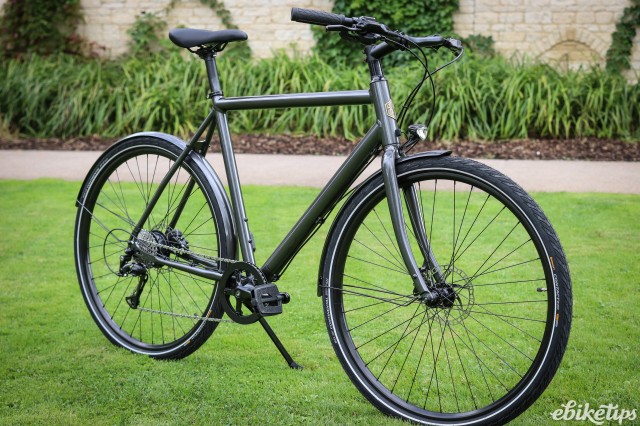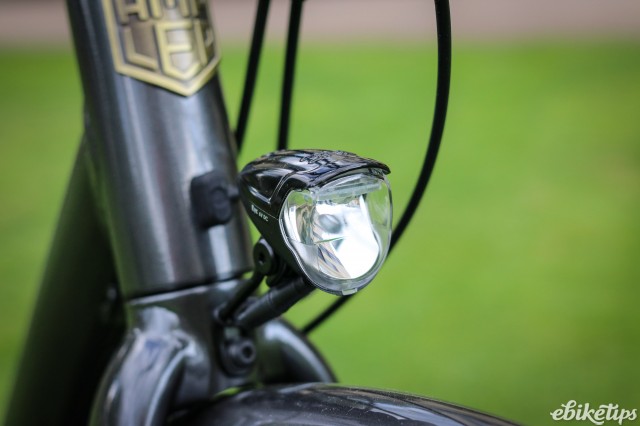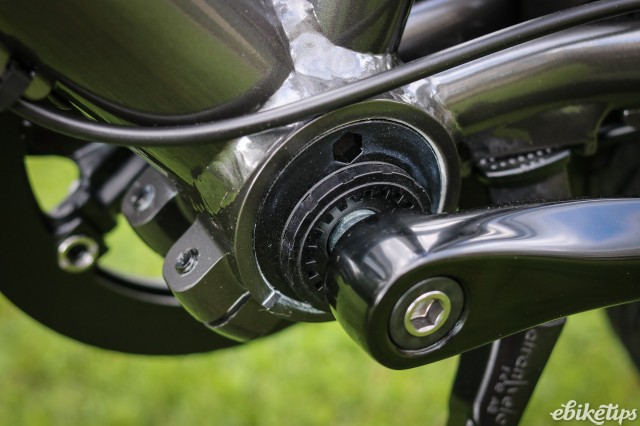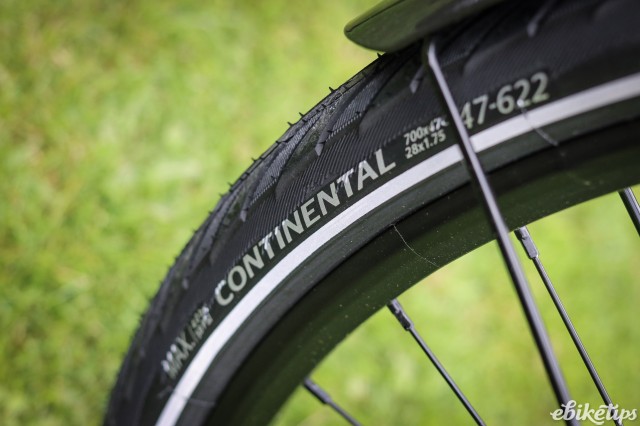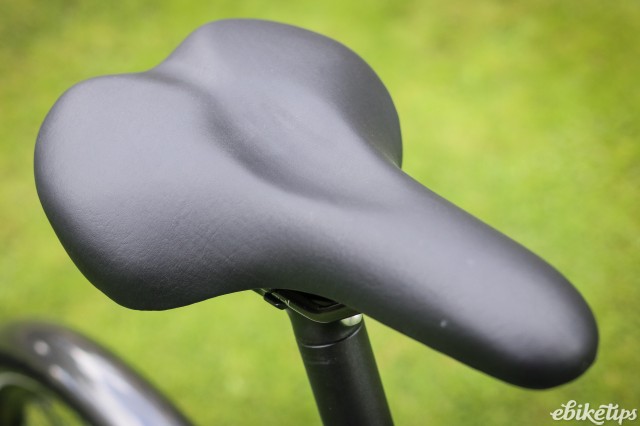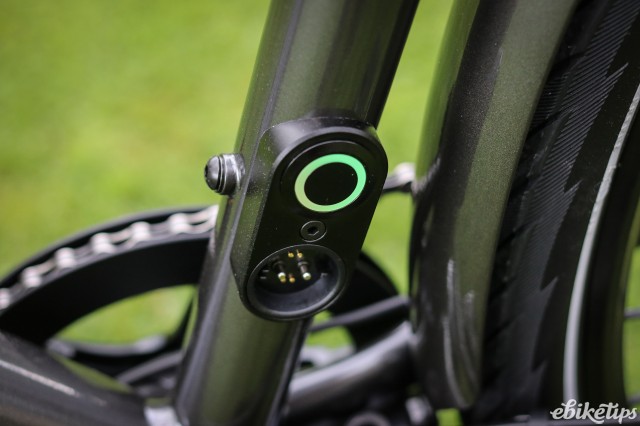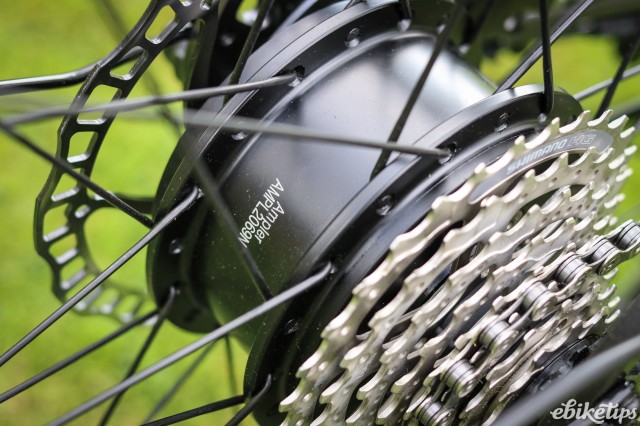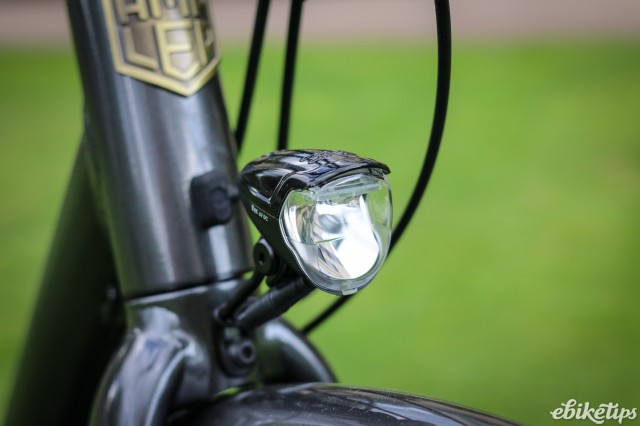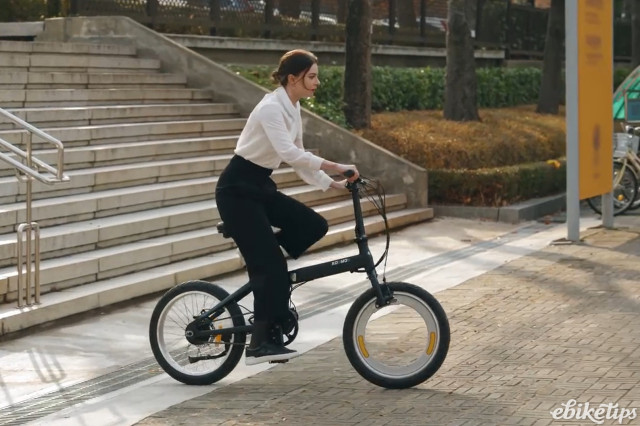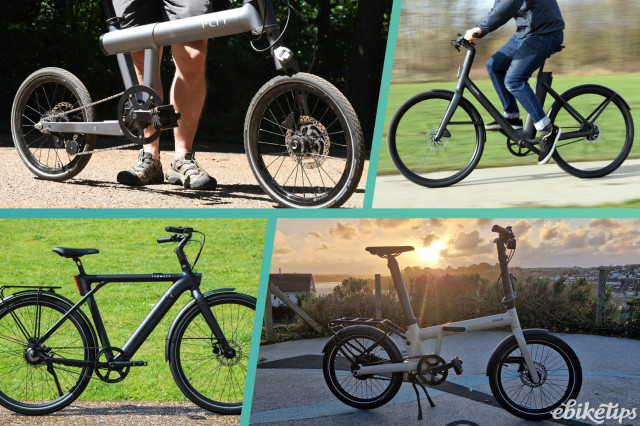Review: Ampler Stout
Overview
- Great looks
- Good city riding position
- Decent range from a single charge
- Not the most powerful motor
- You're paying a premium for the looks
The Ampler range is heavy on style, and the Stout is a good-looking bike. Behind those looks there’s plenty to like: the bike has decent power that’s well-applied, and a good range from its internal battery. It’s simple to use and the Ampler smartphone app is neat. If you’re looking for an unobtrusive e-bike for city riding, it’s certainly one for the list. “Our mission is to make practical yet beautiful electric bicycles that would make personal transport effortless, fast and comfortable”, says Ampler, and they’ve made a pretty good job of it here.
There’s no denying this is a very nice-looking machine. The aluminium frame and fork are well finished in a metallic grey, and the metal mudguards are colour-matched to the bike too. The 250W rear hub motor is pretty inconspicuous, and the 336Wh battery is hidden within the frame. There’s no mar-mounted display; the only control is an single button at the bottom of the seat tube, next to the magnetic charging port. Most people I showed the bike to didn’t clock that it was an e-bike; it just looks like a standard city bike.
The power is there though. The bike is supplied set up as an EU-compliant, 250W/25kmh pedelec, although the app allows you to override those settings (more on that in a bit). The battery is a decent size, considering that it’s entirely hidden within the down tube. It can’t be removed for charging so you’ll need power wherever you store the bike to be charge it; the charger isn’t waterproof, so you need to charge the Ampler indoors, or at least under cover. If that means picking it up and bringing it inside, then you’ll be glad to know that the bike is pretty light for a full-fat e-bike, at 17.8kg. It’s still a bit of a lump compared with a lightweight racer, but it’s a lot easier to handle than most city bikes, which tend to come in at well over 20kg.
The bike uses a torque sensor in the bottom bracket to control the assistance. That means that the pickup of the motor is nice and quick, and it also tends to mean that you get a bit more range out of a single charge as the motor system has finer control over the application of power. The overall feel of the Ampler assistance is pretty unobtrusive and well-regulated; there’s no jolting in and out at the assistance limit, and the motor is smooth and quiet.
In terms of overall power it’s certainly not the most powerful e-bike I’ve ever ridden, but for the kind of riding you’re likely to be doing on a bike like this it’s fine. It’s perfectly happy cruising along on the flat and the low overall weight of the bike means that you don’t need an awful lot of assistance to keep the bike moving at or near the assistance limit. Once the gradient starts to rise the motor takes more of the strain, and up to about an 8% gradient I found it to be capable of doing basically all of the work.
Above that you’ll need to be putting in an increasing amount of effort yourself, but I found that my benchmark commuting hill (1.5km at 5%, with a 12% section) wasn’t really a struggle. If you live in a city less hilly than Bath (and let’s be honest: that’s most cities) then the motor system will be more than enough to get you where you’re going, no sweat. The Stout has a Shimano Acera 9-speed derailleur transmission with a trigger shifter; the gear range is a touch limited on the low side if you’ve got loads of hills to tackle, but you could easily fit a slightly smaller chainring if you wanted to.
The bike’s position is spot-on for city riding. It’s quite a big frame (we had the Large size) and the bike is fairly roomy, but the swept-back bars mean it’s not overly long or unwieldy. There’s a big stack of spacers at the front if you need to tweak the bar position. The lack of a suspension fork firms up the ride but gives a lovely direct feel to the steering, and the 47mm Continental tyres take the sting out of the surface. It’s perfectly happy on unsurfaced fire roads and the like, although it’s happiest on tarmac. The mudguards work well, although you might want to add a flap to the front one to keep the spray off your shoes if you’re planning to do a lot of wet commuting. Shimano hydraulic disc brakes make stopping in any weather simple and predictable.
I found that the Ampler would complete four rounds of my (very hilly) 9km commute before needing a plug-in. That’s not the 70km range that the company claims for the bike but it’s pretty good for a 336Wh battery; I don’t usually get much more than that out of a 400Wh mid motor bike, although those bikes often offer a good deal more assistance on the steeper stuff. If you were using the Ampler on flat urban journeys, that 70km range probably isn’t out of reach.
You can control the bike’s settings, record rides and plan routes on the dedicated Ampler smartphone app. If you like to ride with your phone on the handlebars then the app doubles as a display, giving speed and time information about your ride, as well as telling you the state of the battery, how much help the bike is giving you and a bunch of other easily selectable metrics. You can also configure the two assistance modes; settings of up to 350W and 35km/h are possible. Given that the motor isn’t as powerful as other EU-legal units I’ve tried even when set to 350W, I wouldn’t really have any qualms about using the full power in the UK, but I think that allowing assistance above 25km/h should really be better restricted in the app, or just not offered at all in the UK.
You can turn the lights on and off with the app, too, or with a long press of the power button. The lights are a €150 cost option and worth it if you’re going to be riding in the city all year. The Busch + Müller IQ2 Eyc front light has a nicely shaped beam that’s powerful enough for (leisurely) progress past the city limits, and the back light is neatly recessed into the seatpost. Bear in mind that if you have to have your seatpost set quite low then that can mean some of the recessed LEDs will be below the clamp and not visible. The top two LEDs are proud of the seatpost giving some useful side visbility.
Overall I had a good time riding the Stout. It’s a great bike for just getting about easily, and the simplicity of the on/off motor system, with no display, means there’s very little to think about most of the time. If you want to you can use your phone as a display and move around the modes, but generally I just hit the button and used the Ampler as I would a standard bike. If your bike is your transport and you’re looking to make your life a bit easier, it has plenty of power and a decent range, well hidden inside what looks like a classic city bike. It’s not as powerful as a mid-motor bike and you can get a higher spec than this for the money if you want, but I’d say the Ampler is aiming at a demographic where the look is an important part of the overall appeal, and there’s a bit of a premium for that.
2 comments

no, the battery can be removed and replaced, but you need to remove the bottom bracket so it's not a 2-minute job.
The cowboy looks good, although probably for somewhere flatter than Bath, singlespeeds tend to struggle a bit here!
Thanks for the write-up. You are right that for some people the inconspicuous look is preferable to one with a bulging battery stuck on the frame both for aesthetic and security reasons. I would add that not everyone riding in the city needs the extended range offered by full-size batteries, whereas everyone will appreciate the lower weight!
Now if you could only comment on a similar bike, the Cowboy (cowboy.bike)... It is single-gear but really light for an e-bike (16 kg) and costs a third less than this one.
BTW does the non-removable battery of the Ampler mean it cannot be replaced at the end of its life?
